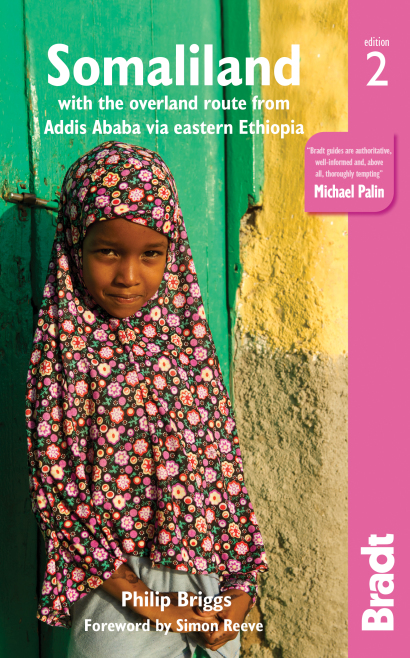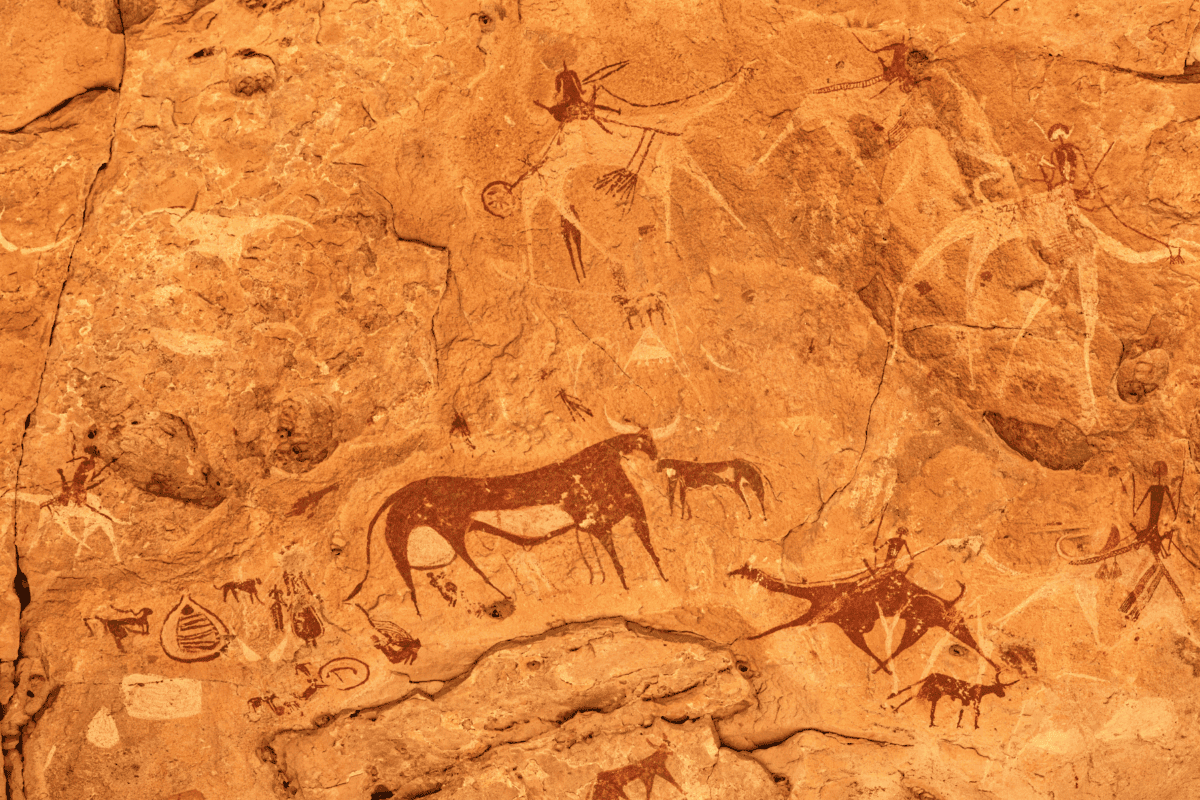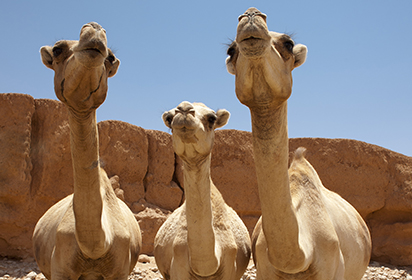Somaliland is memorable not so much for any individual sightseeing opportunities, but for its capacity, by turns rewarding and frustrating, to make visitors experience it entirely on its own terms.
Philip Briggs, author of Somaliland: the Bradt Guide
Somaliland is one of the world’s least-charted travel destinations. A peaceful self-governing democracy in the otherwise tempestuous Horn of Africa, it seceded from the rest of Somalia more than 20 years ago. And yet so far as the United Nations and African Union are concerned, it simply doesn’t exist – indeed, when Somaliland celebrated its 20th anniversary in May 2011, it did so alone and unrecognised by the outside world.
Yet this ancient arid land has much to offer the intrepid traveller. Lapped by the turquoise waters of the Gulf of Aden, its timeworn ports evoke an obscure history of maritime trade stretching back to Pharaonic times. Above the coast stands the remote and unexpectedly chilly Daallo Escarpment, where glades of aromatic junipers, other worldly dragon’s blood succulents, and frankincense-bearing Boswellia trees overlook the shimmering shoreline 2,000 metres below.
Inland are vast empty badlands populated by a thin scattering of desert nomads, domestic camels and wild antelope, and studded with mediaeval Islamic ruins, mysterious stone tumuli, and ancient rock art sites. The most spectacular of these is Las Geel, whose multi-coloured panels depict the cattle-herding lifestyle of artists who trod these desert sands more than 5,000 years ago
Somaliland is not, as yet, a normally functional tourist destination. Facilities fall somewhere between low-key and non-existent, and several key attractions are difficult to reach affordably, or at all. But for flexible travellers imbued with a spirit of adventure, it offers the sort of non-prescribed travel experience one might expect of a breakaway state that remain unrecognised outside its own borders!
For more information, check out our guide to Somaliland
Food and drink in Somaliland
Food
Eating out in Somaliland tends to be an unceremonious activity, and the food is seldom anything to write home about. Local restaurants generally serve a limited selection of pre-cooked dishes, typically pasta and/or rice with vegetable or meat stew, with the most common meats being mutton, goat and camel. The choice is slightly greater at those moderate and upmarket hotels which have their own restaurant (for information on tipping etiquette, see Tips on Tipping).
In addition, Hargeisa and Berbera have a few adequate standalone restaurants catering to Western palates, with Berbera being a good place to break the regime of red meat with some fresh fish. Eating out in Somaliland may be problematic for vegetarians, since there is no guarantee that the vegetable sauce offered at most local restaurants will be strictly vegetarian (it often seems to contain small bits of meat, and even where it doesn’t, it may well use some sort of meat stock). Outside of Hargeisa, strict vegetarians will most likely have to stick to bread, fresh market produce and whatever tinned items they can locate.
One distinctly Somali dish worth trying is laxoox, a filling pancake-like flatbread traditionally baked on a metallic circular stove called a daawo. It is usually eaten at breakfast with sweet Somali tea, or sometimes eggs, or sugar and lime, or even ghee. Laxoox is clearly a relation of Ethiopian injera, and has a similarly spongy texture, but it is made from wheat rather than tef, is less sour, and much smaller and floppier (you would normally eat three or four individual pancakes in one sitting). Fresh bread, known as roodhi, is also widely available in the mornings, either as a crusty roti-like flatbread mofaa, or more conventional rolls. Also popular are the greasy fried dough balls known as khamiir.There are also several Ethiopian restaurants in Somaliland, especially in Hargeisa, usually serving far spicier fare than is conventional for the Somali.
If you are shopping for a trip into remote areas, supermarkets in Hargeisa stock a fair range of imported goodies such as crisps, biscuits, chocolates and sweets. Elsewhere in the country, the selection is very limited. Fresh fruit and vegetables are widely available at markets.
Drinks
Now with its own bottling factory in Hargeisa, Coca-Cola is widely available in Somaliland, as are various other sweet carbonated drinks. You can buy packaged fruit juices in some supermarkets, but a more attractive (and very budget-friendly) option is the delicious freshly pureed or squeezed fruit juices made at stalls and restaurants in the larger towns. Another local favourite is Somali tea, which is often spiced and usually brewed with milk and a generous dose of sugar. If you prefer your tea free of milk and/or sugar, ask for Lipton. Bottled water is available, but make sure it’s sealed. No alcoholic drinks are sold anywhere in Somaliland, although a few smarter restaurants and hotels stock alcohol-free beer.
Health and safety in Somaliland
Health
Like most of sub-Saharan Africa, Somaliland harbours an array of tropical diseases of varying degrees of severity and inconvenience. Although there’s a fair possibility that you will become ill at some point on your trip, the cause is most likely to be either straightforward travellers’ diarrhoea or a cold, and provided you receive the necessary immunisations before you travel, the only major cause for concern once you are in the country is malaria, which can be combated to a large extent by taking sensible precautions.
Within Somaliland, there are private clinics and/or hospitals in all the larger towns, but they tend to be under-equipped and overcrowded, the main exception being the private Edna Adan Maternity Hospital in Hargeisa. Pharmacies are also present in all the larger towns, and they are usually quite well stocked and staffed by an English-speaking pharmacist. You should be able to buy such commonly required medicines as broad-spectrum antibiotics and Flagyl in any sizeable town. If you are wandering off the beaten track, it might be worth carrying the obvious with you. As for malaria tablets, whether for prophylaxis or treatment you would be wise to get them before you go as not all tablets are readily available.
Immunisations
Preparations to ensure a healthy trip to Somaliland require checks on your immunisation status: it is wise to be up to date on tetanus, polio and diphtheria (now given as an all-in-one vaccine, Revaxis, that lasts for ten years), and hepatitis A. Yellow fever is not considered a risk in Somaliland, and therefore vaccination would only be suggested if the traveller is entering Somaliland from another yellow fever country such as Ethiopia.
Make sure all your immunisations are up to date, including tetanus, polio and diphtheria (now given as an all-in-one vaccine, Revaxis, that lasts for ten years), and hepatitis A. Yellow fever is not considered a risk in Somaliland, and therefore vaccination would only be suggested if the traveller is entering Somaliland from another yellow fever country such as Ethiopia. Immunisation against cholera, typhoid, rabies, meningitis and tuberculosis might also be advisable.
The biggest health threat at lower altitudes is malaria. There is no vaccine against this mosquito-borne disease, but a variety of preventative drugs is available, including mefloquine, malarone and the antibiotic doxycycline. If you are visiting a malarial area, it is normal to start taking these at least two weeks before your trip and to continue for at least a month after you get home. The most suitable choice of drug varies depending on the individual and the country they are visiting, so visit your GP or a travel clinic for medical advice. If you will be spending a long time in Africa, and expect to visit remote areas, be aware that no preventative drug is 100% effective, so carry a cure too. It is also worth noting that no homeopathic prophylactic for malaria exists, nor can any traveller acquire effective resistance to malaria. Those who don’t make use of preventative drugs risk their life in a manner that is both foolish and unnecessary.
Though advised for everyone, a pre-exposure rabies vaccination, involving three doses taken over a minimum of 21 days, is particularly important if you intend to have contact with animals, or are likely to be 24 hours away from medical help.
Take a small medical kit with you. This should contain malaria tablets and a thermometer, soluble aspirin or paracetamol (good for gargling when you have a sore throat and for reducing fever and pains), plasters (band-aids), potassium permanganate crystals or another favoured antiseptic, iodine for sterilising water and cleaning wounds and sunblock. As restaurant meals in Somaliland tend to be based around meat and carbohydrate, some people may like to carry vitamin pills.
Prolonged immobility on long-haul flights can result in deep-vein thrombosis (DVT), which can be dangerous if the clot travels to the lungs to cause pulmonary embolus. The risk increases with age, and is higher in obese or pregnant travellers, heavy smokers, those taller than 6ft/1.8m or shorter than 5ft/1.5m, and anybody with a history of clots, recent major operation or varicose veins surgery, cancer, a stroke or heart disease.
Travel clinics and health information
A full list of current travel clinic websites worldwide is available on w istm.org. For other journey preparation information, consult travelhealthpro.org.uk (UK) or wwwnc.cdc.gov/travel (US). Information about various medications may be found on https://www.netdoctor.co.uk/health-services/a28163609/travel-vaccinations/. All advice found online should be used in conjunction with expert advice received prior to or during travel.
Safety
The first question to pass through the mind of many prospective visitors to Somaliland will be: ‘Is it safe?’. To be honest, this question has no definitive answer. Officially, Somaliland is part of Somalia, undoubtedly one of the most lawless and dangerous countries in the world. As of early 2018, the US Department of State website and the British Foreign Office warns against travel in Somalia and Somaliland, citing bombings, kidnappings, illegal roadblocks and potential terrorist attacks as reasons to avoid all but essential travel.
In practice, however, Somaliland functions as a completely separate country to Somalia or Puntland, and it is universally regarded to be far safer than either of these fractious neighbours. Within Somaliland itself, there have been infrequent instances of foreign aid workers being killed or kidnapped since independence in 1991, acts perpetrated by Al-Shabaab and other external groups hoping to destabilise their peaceful neighbour, but such incidents are evidently on the decrease.
Indeed, the last such incident occurred in 2008, when Hargeisa and Bosaso were hit by six co-ordinated suicide bombings. Since then, Somaliland has attracted a significant trickle of travellers from across the Ethiopian border, and the impression of every foreigner we met travelling or working in Somaliland is that the visitors have little to worry about in terms of security, provided that they stick to regularly visited sites such as Hargeisa, Berbera and Las Geel, and ask local advice before heading further off the beaten track. That said, the enduring instability of the entire Somali region precludes too many glib reassurances.
Also bearing on the issue of safety is the official requirement that all foreigners moving outside Hargeisa must be accompanied by an armed member of the Special Protection Unit. The official line seems to be that this is an ultra-conservative precaution against the devastating effect the killing of a foreigner would have on Somaliland’s petition for international recognition. But it wouldn’t be necessary, surely, unless there was a genuine risk associated with travel outside the capital?
Perhaps, or is it simply misplaced paranoia? It has even been suggested that the SPU policy exists at the instigation of foreign UN and NGO workers with a vested interest in maintaining Somaliland’s official high-risk status (it means that salaries are higher than in a more stable country). What can be said with confidence is that it is increasingly common for the Chief of Police in Hargeisa to issue a written waiver of SPU protection to backpackers upon request – an anomaly from which you can draw your own conclusions!
Whatever the actual risks associated with travel in Somaliland, the reality is that if you get into any sort of trouble there you’ll be a lot more isolated than would normally be the case. There will be no embassy to help bail you out, since Ethiopia is the only country in the world with formal diplomatic representation in Hargeisa. Furthermore, most travel insurance policies explicitly exclude cover for countries subject to the FCO or US State Department travel warnings quoted above, in which case you will also be uninsured.
Security issues aside, Somaliland is largely free of more conventional crime, such as pickpocketing, mugging and theft from hotel rooms. Indeed, we have heard of no such incident involving a traveller anywhere in Somaliland, and would regard the country to be as safe as anywhere we have visited in that respect. All the same, there is a significant disparity in wealth between most locals and visitors, so it might be viewed as tempting fate to wander along unlit streets alone at night or to carry large sums of money or valuables publicly. And on the basis that it is preferable to err on the side of caution, below are a few tips that apply to travelling anywhere in Africa.
- Most casual thieves operate in busy markets and taxi parks. Keep a close watch on your possessions in such places, and avoid having valuables or large amounts of money loose in your daypack or pocket.
- Keep all your valuables and the bulk of your money in a hidden money belt. Never show this money belt in public. Keep any spare cash you might need elsewhere on your person.
- A buttoned-up pocket on the front of the shirt is one of the most secure places, as money cannot be snatched from it without the thief coming into view.
- Where the choice exists between carrying valuables on your person or leaving them in a locked room, we believe that the latter option is generally safer, assuming that the room is absolutely secure. However, some travellers’ cheque companies will not refund cheques stolen from a room, or might reject the claim on a technicality, for instance if the door wasn’t damaged during the robbery.
- Leave any jewellery of financial or sentimental value at home.
Female travellers
Women travellers generally regard sub-equatorial Africa as one of the safest places to travel alone anywhere in the world, and Somaliland is probably no exception when it comes to gender-specific risks. That said, single women are advised to avoid hotels listed in the budget or shoestring category, in particular those with shared showers and toilets, which are highly unlikely to be frequented by local women. Likewise, it is unusual for local women to eat alone in restaurants, and female travellers who do so might become targets of unwanted curiosity or flirtation. Many female travellers to relatively conservative countries consider it to be a good idea to pretend you have a husband at home or in another town – and, ideally, a wedding ring as ‘proof’ of your status.
The biggest restriction on women travellers to Somaliland is the need to adhere to smothering local dress codes in all public places. For local women, the standard items of clothing are a loose-fitting all-enveloping ankle-length dress called a direh, and a bonnet-like headscarf called a hijab that covers every last hair on their head. Some women also wear the more severe abaya, a long black or multi-coloured garment, reminiscent of a nun’s habit, that leaves only the eyes, hands and feet exposed. Female travellers should dress similarly, at the very minimum wearing a loose ankle-length skirt, a top that is sufficiently baggy to mask the shape of their breasts, and a loose headscarf. Aside from being offensive to local sensibilities, any attire tighter or more revealing than this might, in a Somali context, create an unwanted impression of availability.
LGBTQ+ travellers
Any act of male or female homosexuality is a criminal offence. Offenders risk imprisonment or, in extreme cases, capital punishment. That doesn’t mean that homosexuality doesn’t exist, but out of necessity it is very clandestine. Setting aside the rights and wrongs of the matter, Somaliland clearly isn’t a destination suited to single travellers in search of anything approximating a gay scene (or, for that matter, any other form of secular nightlife), and at risk of stating the blindingly obvious, gay couples who do visit the country should exercise maximum discretion.
Travel and visas in Somaliland
Visas
All visitors to Somaliland require a valid passport, the expiry date of which should be at least six months after you intend to end your travels. A Somaliland visa (emphatically not the same thing as a Somali visa) must also be arranged in advance by all visitors. This is a requirement that is complicated by the fact Somaliland is not yet formally recognised as a country and thus lacks proper diplomatic representation in most parts of the world. A viable option for those flying to Hargeisa is to arrange a visa through a local operator or at the hotel where you will be staying.
Getting there and away
A handful of major international carriers now fly to Hargeisa Egal International Airport (HGA). FlyDubai and Air Arabia are the best options for connecting flights coming from Europe or North America, while Ethiopian Airlines is a useful option from elsewhere in Africa. Other smaller regional airlines offering direct flights to Hargeisa and/or Berbera (BBO) from the likes of Mogadishu (Somalia), Nairobi (Kenya) and Djibouti City (Djibouti) include African Express, Daallo Airlines, Jubba Airways and the recently relaunched Air Djibouti.
Getting around
Although occasional flights do connect Hargeisa to other towns in Somaliland, the more normal mode of transport is by road. Conditions are variable. The main road from Borama via Hargeisa, Berbera, Sheikh, Burao and Oog (the Garoowe border post with Somalia) is surfaced and can easily be covered in any sedan car. All other roads, including the ones from Borama to Zeila, and Oog to Maydh via Erigavo, are unsurfaced and too rough to risk without a 4×4. There are no buses in Somaliland, but foreigners are usually permitted to use the inexpensive but jam-packed shared taxis that run along the stretch of road from Borama to Burao, via Hargeisa and Berbera, and also to travel in the 4x4s that connect Hargeisa and Burao to Zeila and the Djibouti border. Other parts of the country may only be visited in a 4×4 with a local driver, which can be rented through one of the agencies listed under Hargeisa.
From what we know, self-drive car rental is not an option in Somaliland. It could be that overlanders with their own vehicle are permitted to drive themselves with SPU protection, but we have never heard from anybody who has done this.
When to visit Somaliland
The most pleasant time to travel is over the northern hemisphere winter, from November to March, when it is relatively cool, with maximum temperatures of around 25°C typical on the plateau around Hargeisa, rising to around 30°C along the coast. By contrast, the summer months can be oppressively hot, especially along the coast, where temperatures in excess of 45°C are frequently recorded.
Winter is also the dry season, which is an advantage for those who plan to venture beyond the few asphalt roads – rainfall figures for Somaliland are low, but when the rain does come, seasonal watercourses and muddy depressions might double the travel times along routes such as Borama to Zeila and Burao to Erigavo, or worse still render them temporarily impassable.
There are, however, some advantages to travelling in the summer, among them that the countryside is much greener, and bird and mammal breeding activity reaches a peak.
Climate
Somaliland generally has a hot, dry climate, and four main seasons are recognised. Jiilaal, from December to March, though technically winter, is hot and dry, with the main wind blowing from the northeast. Gu, from April to June, is the main rainy season, and hotter than the previous season, with occasional violent storms. The drier Xagaa, over July and August, is the hottest time of year, with a low chance of rain, characterised by winds blowing from the southeast. Dayr, from September to November, is cooler with occasional light rains. The climate charts below, for Hargeisa, Erigavo and Berbera, are respectively representative of conditions along the inner plateau, the high escarpment and the coast.
What to see and do in Somaliland
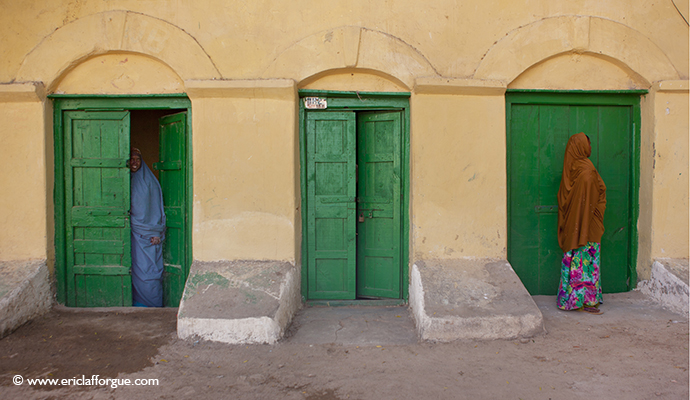 The oldest quarter of Berbera is known as Darole © Eric Lafforgue
The oldest quarter of Berbera is known as Darole © Eric Lafforgue
Berbera
The historic town of Berbera has been a centre of maritime trade since ancient times. It stands on the Gulf of Aden opposite Yemen, a strategic location along the ancient trade route between the Red Sea and India, and of similar importance during the more recent Cold War. Indeed, in the 1970s, Berbera was an important base for the USSR, which built the 4km runway (one of the longest anywhere in Africa) that somewhat redundantly graces the international airport a few kilometres south of town. Today, Berbera is the main commercial seaport in Somaliland, serving not only the capital Hargeisa, about 150km to the south, but also bordering parts of eastern Ethiopia.
Boasting an idyllic swimming beach and access to innumerable well-preserved coral reefs, Berbera has enormous potential for tourist development, although this remains largely unrealised at the time of writing, with just one rather unconvincing resort hotel and dive centre in place. Also of great interest is the old quarter of town, where the wealth of crumbling pre-20th century architectural gems – most in urgent need of restoration work – would make it a shoo-in candidate as a UNESCO World Heritage Site were Somaliland ever to gain UN recognition. It doesn’t seem wildly fanciful to see a rehabilitated incarnation of the old town one day forming a Somali counterpart to such iconic cultural tourist hubs as Ilha do Moçambique, Gorée Island or Lamu.
As things stand, Berbera tends to make a less-than-favourable first impression, particularly when you arrive in the harsh light of early afternoon via an extensive and unsightly litter belt of scrubby thorn trees, draped with thin plastic bags. It doesn’t help that the only beachfront hotel, the out-of-town Maan-soor, has the stark and unfinished appearance of a construction site. Or that the town can be intolerably hot in the summer (May to September), when daytime temperatures routinely nudge above 45°C, with typical nocturnal minimums of 30–35°C, all but necessitating a room with air conditioning.
Once settled in, however, Berbera is thoroughly appealing, at least during the relatively cool winter months, when average temperatures, although not exactly arctic, are almost 10°C lower. The compact old town, its alleys lined with attractive mosques and other relicts of the Ottoman occupation, is great fun to explore, and the sandy out-of-town beach is genuinely refreshing. Further afield, the surrounding reefs offer superb diving and snorkelling, while the ancient waterworks at the Dubaar Springs – overlooked by old Ottoman fortifications – make for a worthwhile day out. Berbera could also be used as a base for exploring the likes of Mount Wagar and Ga’an Libah.
Daallo Escarpment
Somaliland’s foremost natural attraction, the Daallo (or Daloh) Forest lies in the spectacular Calmadow (or Al Mado) Range, a tall limestone and gypsum escarpment that rises dramatically from the low-lying coastal plain between Maydh and Bosaso. Little known to outsiders and as yet undeveloped for tourism, Daallo is less than an hour’s drive north of Erigavo, close to the base of Mount Shimbiris, the highest point anywhere in Somalia. The main attractions of Daallo are the stupendous clifftop views from the top of the escarpment to the distant Gulf of Aden more than 2,000m below, and a rich biodiversity that includes at least 200 endemic plant species, along with many woodland birds and other animals whose range is confined to the Somali region.
Biologically, Daallo represents the most accessible and largest semi-pristine relict of Somali Montane Xeric Woodland, an eco-region confined to the 300km-long escarpment running inland from the northern Somali coast. Isolated from other similar habitats by the vast swathes of desert that cover the Somali interior and the far east of Ethiopia, this important centre of endemism supports a unique combination of plant species, with links to the Afromontane, Mediterranean and Micronesian regions, and much of it remains unexplored in scientific terms. Plans to set aside the forest as a national park have been in the pipeline for years but, as things stand, it is not accorded any formal protection and large stands of woodland have been chopped down in recent years by charcoal burners.
Daallo is the wettest part of Somaliland, receiving a mean annual rainfall of around 750mm, most of which falls between April and October, when the wellwatered lower slopes form the country’s main centre of agriculture. During the drier winter months, sea fogs and mist are an important supplementary source of water for common high-altitude trees such as Juniperus procera, Buxus hildebrantii, Olea chrysophylla and Sideroxylon buxifolium. A striking plant associated with Daallo is the endangered Gabel Elba dragon’s blood tree (Dracaena ombet), a thick-stemmed, spike-leaved succulent that manages to grow in the most unlikely crags and is known locally as mooli. The lower slopes of the escarpment also support large stands of Boswellia frereana, whose resin is used to make frankincense.
Daallo supports the densest and perhaps the richest fauna of the Somali region. It is of particular interest to birdwatchers as the best place to see a host of endemics and other localised specials, including Archer’s buzzard, Archer’s francolin, Somali thrush, Warsangli linnet and Somali golden-winged grosbeak, as well as more typical African highland and forest species, ranging from the busy Abyssinian white-eye to the stunning Narina trogon. Mammals are more elusive but include Hamadryas baboon, two species of hyrax and the endearing Speke’s pectinator. The endemic beira antelope was once resident in the region, but we know of no recent sightings. The forest also supports a varied selection of secretive predators – locals claim that leopard and spotted hyena are quite common – and we had a magnificent view of a striped hyena lying in the middle of the road shortly after dusk.
Hargeisa
Somaliland’s largest town has a dusty low-rise feel more in line with a provincial administrative centre than a national capital. There’s just one embassy in Hargeisa, few familiar airlines are represented, and other well-known international brands – be it McDonald’s, Barclays or Hilton – are conspicuous by their collective absence. There are no trendy nightspots or sushi bars in Somaliland’s capital, no neon lights or overhead passes, no five-star hotels or flash tour operators, nor any cinemas or theatres. Suffice to say that if cosmopolitan airs and transatlantic comforts feature highly on your list of travel priorities, humble little Hargeisa is bound to disappoint.
Therein lies much of Hargeisa’s low-key charm. Rebuilt and resurrected from the ashes of recent war, Hargeisa is a city whose down-to-earth character and lack of architectural pomposity is epitomised by the use of a crashed MiG fighter jet as the centrepiece of its most important Civil War Memorial. Similarly, government offices in Hargeisa tend to be plainly decorated and informally signposted, and in most cases they effectively close shop at noon, after which the obligatory midday siesta morphs into an afternoon khat-chewing session. Indeed, the ubiquitous obsession with chewing this mildly narcotic leaf – every street corner seemingly has its own khat stall – gives Hargeisa a mild and rather likeable aura of decadence, one at odds with the stuffy images that many outsiders associate with Islamic Africa.
Overwhelmingly friendly and practically free of crime, Hargeisa in many respects feels more like an extension of the surrounding countryside than a proper urban conglomeration. Goats and sheep wander through the suburbs, resting up wherever they find a sliver of shade, donkey carts jostle for road space with taxis and minibuses, and most men and practically all women dress traditionally in colourful flowing cloths. As is so often the case in small-town Africa, locals regularly stop you to ask your nationality and make small talk. Seldom, however, do such approaches appear to be motivated by anything other than plain curiosity – and, perhaps, the pleasurable implicit affirmation of nationhood associated with the presence of foreigners (who are often, and favourably, assumed to be journalists rather than tourists).
As national capitals go, Hargeisa is on the small side (though the estimated population has doubled from 560,000 in 2005 to more than 1.1 million today) and is unusually manageable. Most activity takes place within a block or two of Independence Avenue, the strip of asphalt that snakes for several kilometres from the western outskirts of town to the east. The town centre, a tight grid of narrow roads studded with mosques and centred upon the venerable Oriental Hotel, is one vast sprawling market, with all the energy that implies. And while suburban Hargeisa is lacking in must-see attractions, it is always rewarding to explore the back roads on foot, drifting towards the fabulous camel market south of town, the green compound of the Maan-soor Hotel in the burgeoning suburb of Jijiga Yar, or one of the city’s many handsome mosques.
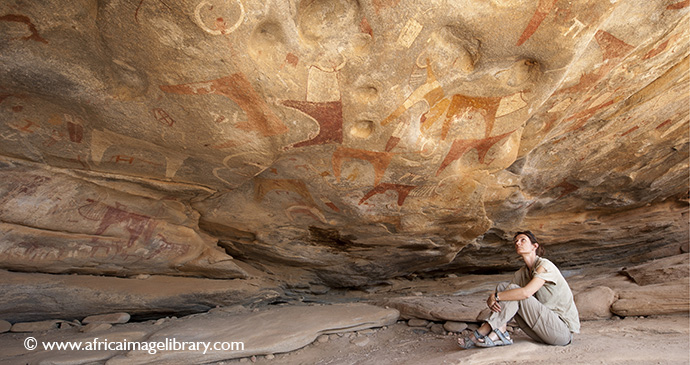 The southeast face of Las Geel has a ceiling that is covered in 350 individual paintings © Ariadne Van Zandbergen, Africa Image Library
The southeast face of Las Geel has a ceiling that is covered in 350 individual paintings © Ariadne Van Zandbergen, Africa Image Library
Las Geel
Estimated to be at least 5,000 years old, and quite possibly twice as ancient, the superb rock art at Las Geel ranks among the oldest and best preserved of its type anywhere in Africa. It comprises about a dozen individual painted shelters scattered on a granitic outcrop that rises from the confluence of two wadis, a spot where the high water is reflected in the name Las Geel meaning ‘Camel’s Waterhole’. Their presence provides incontrovertible evidence that the pastoralist lifestyle was well established in the region thousands of years before it reached western Europe.
Easily visited as a day trip from Hargeisa or en route to Berbera, Las Geel is the most compelling tourist attraction in Somaliland, topping the Department of Tourism & Architecture’s list of potential UNESCO World Heritage Sites. The site was also visited by the broadcaster Simon Reeve for the BBC programme Places That Don’t Exist, broadcast in 2005. And yet, incredibly, the existence of this fantastic rock art remained unknown to the outside world until three years before that. Although locals had long held the site sacred, it was first documented in December 2002, when a team of French archaeologists under Professor Xavier Gutherz was led here by villagers from nearby Dhubato.
Maduna ruins
The most important feature of the Maduna ruins is a large rectangular mosque, the 3m-high walls of which are still intact and contain a mihrab along with perhaps a dozen smaller arched niches. This central building is surrounded by several dozen old houses, most of which still have partially intact walls, and the baobab on the slope immediately below is sufficiently large to suggest it was planted when the city was still inhabited.
An aura of mystery overhangs Maduna – unsurprisingly, perhaps, when so little is known about its history. The dry-stone architectural style suggests that the ruined city was a contemporary of Amoud and Abasa, so presumably it once formed part of the Adal Sultanate. As far as we know, however, the site has never been excavated and no historical records pertaining to it survive. Also perplexing, according to archaeologist Sada Mire’s article in World Archaeology, are several ‘dome-shaped structures without doors or windows’ whose ‘only entrance was via a small opening at the top’. Mire suggests these rooms may have been prison cells of some type, but we can only speculate.
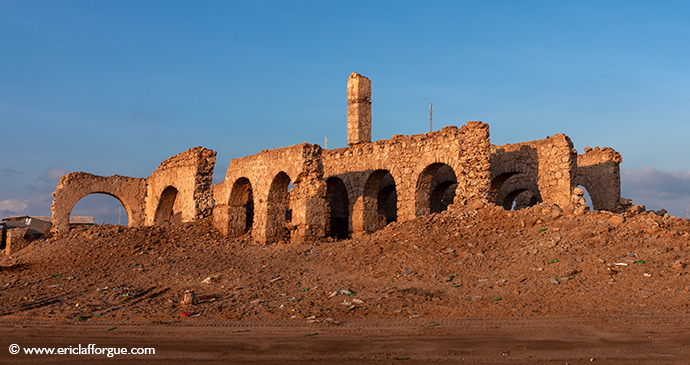
Zeila is studded with ruins that date to its medieval heyday as an Islamic mercantile port © Eric Lafforgue
Zeila
One of the oldest ports on the east African coast, Zeila (also known as Zayla or Seylac) is set on a narrow sandy mangrove-lined peninsula that protrudes into the shallow island-studded waters of the Gulf of Aden, some 25km southeast of the Djibouti border.
Small and rundown it may be, but the present-day town of Zeila is studded with ruins that date to its medieval heyday as an Islamic mercantile port, including one of the world’s oldest mosques. Zeila is also the gateway for boat trips to an offshore archipelago of six small islands, including Sa’ad ad-Din and Aibat, noted for their historic and avian significance. Recently designated as one of Somaliland’s two marine national parks, the pristine reefs and islands off Zeila also boast immense potential for snorkelling and diving, and while no suitable facilities for submarine exploration are currently in place, diving trips can be arranged through the dive operation in Berbera.
Related books
For more information, see our guide to Somaliland:
Related articles
Africa has some magnificent centuries-old rock art – how many have you visited?
Somaliland is a unique, strange and intriguing place that is seemingly worlds away from its Somali neighbours.
